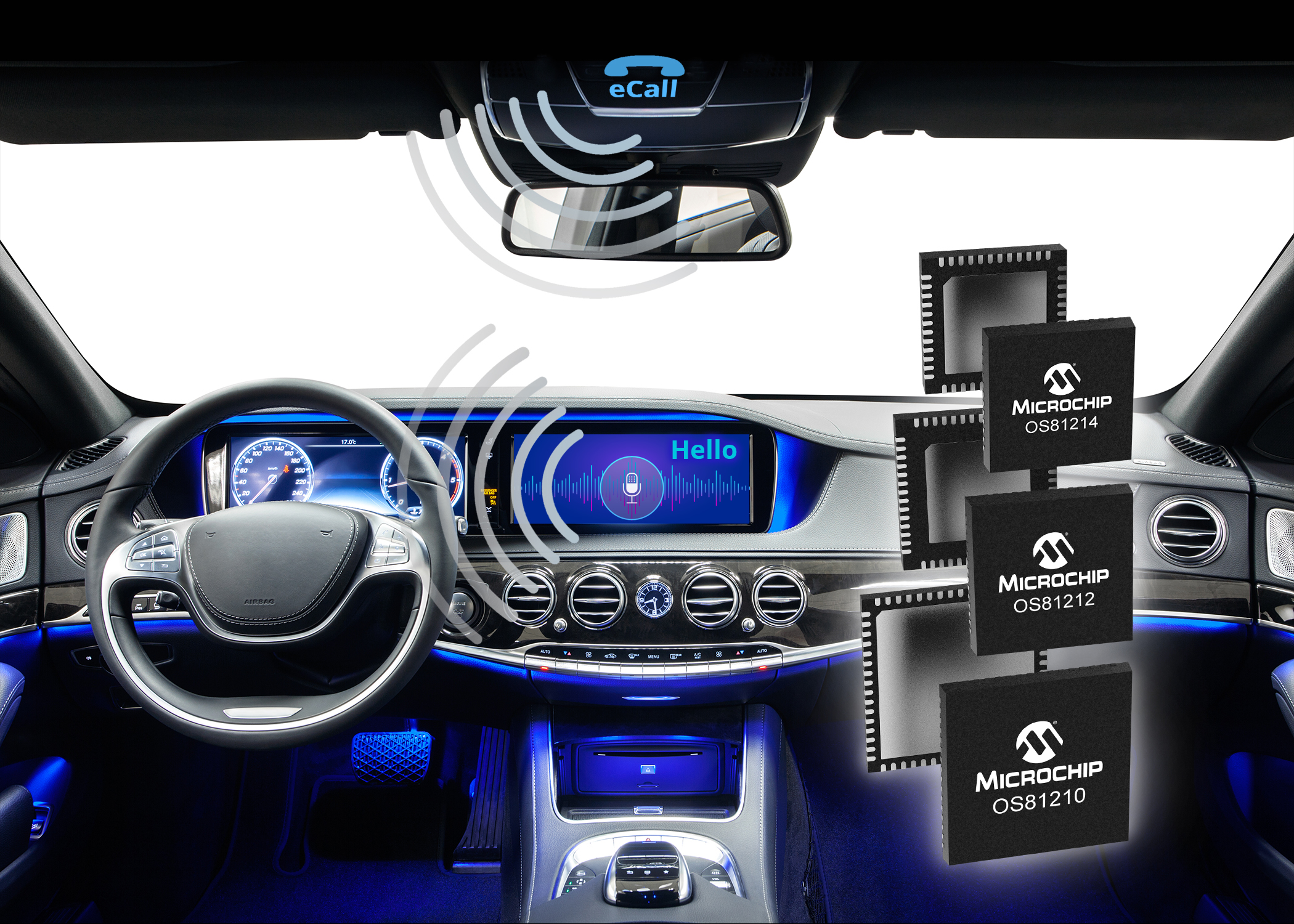INICnet coexists with automotive Ethernet, efficiently linking IP-based communication across vehicle domains
19 November 2018, New Delhi, [NASDAQ: MCHP] — With the addition of mobile services, cross-domain communication and autonomous driving applications to in-vehicle networking, infotainment systems require a more flexible solution for transporting packet, stream and control content. Existing implementations are either costly and cumbersome, or too limited in bandwidth and packet data capabilities to support system updates and internetworking requirements. To address this need, Microchip Technology Inc. has announced the industry’s most efficient automotive infotainment networking solution that supports all data types, including audio, video, control and Ethernet, over a single cable. Intelligent Network Interface Controller networking (INICnet) technology is a synchronous, scalable solution that significantly simplifies building audio and infotainment systems, offering seamless implementation in vehicles that have Ethernet-oriented system architectures.
Audio is a key infotainment feature in vehicles, and INICnet technology provides full flexibility through supporting a variety of digital audio formats with multiple sources and sinks. INICnet technology also provides high-speed packet-data communications with support for file transfers, Over-The-Air (OTA) software updates and system diagnostics via standard Ethernet frames. Thus, INICnet technology supports seamless integration of Internet Protocol (IP)-based system management and data communications, along with very efficient transport of stream data. INICnet technology does not require the development and licensing of additional protocols or software stacks, reducing development costs, effort and time.
“Microchip has extensive experience as the leading supplier of networking solutions for high-bandwidth, in-vehicle infotainment systems,” said Matthias Kaestner, vice president of Microchip’s automotive business units. “With support for Ethernet, audio, video and control over a single cable, INICnet technology is a future-proof solution that enables OEMs to build applications that align with the development trends of in-vehicle networking.”
INICnet technology provides a standardised solution that works with both Unshielded Twisted Pair (UTP) at 50 Mbps and coaxial cable at 150 Mbps. With low and deterministic latency, INICnet technology supports deployment of complex audio and acoustics applications. Integrated network management supports networks ranging from two to 50 nodes, as well as processor-less or slim modules where the node is remotely configured and managed. The solution’s Power over Data Line (PoDL) capability saves costs on power management for microphones and other slim modules. Nodes can be arranged in any order with the same result, and any node in the system can directly communicate with any other node in the system.
Development Tools
INICnet technology comes with Unified Centralised Network Stack (UNICENS), a free-of-charge network management software. UNICENS shortens development cycles, reduces software complexity and simplifies system verification for an infotainment system linked by INICnet technology. UNICENS easily coexists with IP-based system management, simplifying the application code by separating system management from resource management.
Additional INICnet technology tools include a network analyser, a network configuration tool, as well as evaluation boards with various feature sets, all through Microchip’s K2L subsidiary.
Availability
INICnet technology 150 products are available today in volume production quantities. INICnet technology 50 UTP samples are available now and will be available in volume production in 2019. For additional information, contact a Microchip sales representative or authorised worldwide distributor, or visit Microchip’s website.
Resources
High-res images available through Flickr or editorial contact (feel free to publish):
Application image: https://www.flickr.com/photos/microchiptechnology/43964877440/
Chip photo: https://www.flickr.com/photos/microchiptechnology/43964876600


